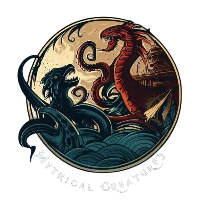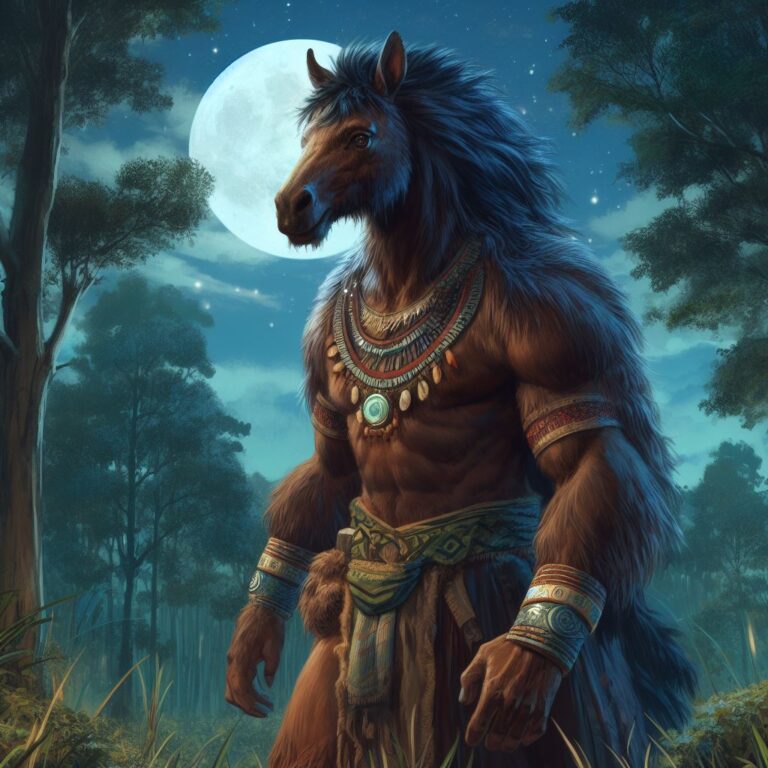![Siyokoy Pathfinder Merman in Philippines Mythology [Pics] 1 mythical creatures art Siyokoy sea mythical creature Filipino mythology](https://mythicalcreatures.blog/wp-content/uploads/2023/09/Siyokoy-sea-mythical-creature-Filipino-mythology.jpg)
The mythology and folklore of the Philippines is rich with legendary creatures and beings, influenced by both indigenous beliefs and foreign colonizers over the centuries.
One prominent mythical figure that persists from ancient times to the modern day is the siyokoy – a mermaid-like entity that is both revered and feared.
Siyokoy mermaids have origins dating back to pre-colonial eras, feature heavily in epics and literature, and continue to captivate the imagination of Filipinos today.
This article will provide an extensive overview of the siyokoy mermaid – their history and origins, physical attributes, dual benevolent and malevolent nature, modern beliefs and reported sightings, and representation across Philippine pop culture.
What is a Siyokoy?
Siyokoy (also spelled sirena or syokoy) are mythical mermaid creatures that have existed in Philippine folklore and oral traditions since ancient times. They are believed to inhabit the rivers, lakes, waterfalls, and seas surrounding the archipelago nation.
The upper body of a siyokoy resembles a human, typically described as scary and youthful. Their lower half takes the form of a fish, serpent, or eel-like tail. They have long, flowing hair in black, blue, or green hues.
Siyokoy in English
The term is derived from the Philippine mythological creature siyokoy, roughly equivalent to the merman.
RELATED: TOP TEN MYTHICAL CREATURES FROM THE PHILIPPINES
Origins and History of Siyokoy
The origins of the siyokoy trace back to Philippine mythology before Spanish colonization in the 16th century. They were included in ancient literature like the Hinilawod epic and the controversial Code of Kalantiaw.
Early mermaid beliefs likely blended elements of indigenous mythologies with foreign influences from visiting traders. The siyokoy share similarities with merfolk like sirens and ningyo, as well as serpent and water deities in other cultures.
Despite conversion to Christianity and colonial influences, these mermaids persisted in Philippine folklore over the centuries. They are deeply ingrained in legends across Luzon, Visayas, and Mindanao.
What a Siyokoy Looks Like
![Siyokoy Pathfinder Merman in Philippines Mythology [Pics] 2 mythical creatures art Siyokoy in Philippines mythology sea monster like a mermaid with green scales](https://mythicalcreatures.blog/wp-content/uploads/2023/11/Siyokoy-in-philippines-mythology-sea-monster-like-a-mermaid-with-green-scales.jpg)
In addition to their defining human-fish hybrid appearance, siyokoy mermaids possess distinctive physical and supernatural traits.
- Upper body and face of a female human – often described as very beautiful or seductive
- Lower body of a serpentine fish or eel tail – allows them to swiftly swim
- Long, flowing hair in shades of black, green or blue – represents their aquatic origins
- Associated with bodies of water – oceans, rivers, lakes, waterfalls
- Connected to the cycles of the moon – believed to be stronger under a full moon
- Shapeshifting abilities – can transform from mermaid to full human
- Magical powers over nature – hypnosis, healing, controlling weather and tides
Their appearance and talents evoke both allure and fear among humans.
Behavior and Nature of Siyokoy
One of the most intriguing aspects of siyokoy mermaids is their dualistic nature – alternating between good and evil, beneficent and malicious.
- Use hypnotic singing to lure humans – to drown or kidnap them
- Vengeful if offended – will curse people with sickness or misfortune
- Jealous creatures – kidnap mortal men they fall in love with
- Protect fish and marine life – by punishing over-fishing
- Associated with fertility and good luck – offerings made to siyokoy for fortune
- Guardians of water bodies – blamed for floods, storms if angered
Their capricious disposition means they should be both respected and avoided.
Modern Beliefs and Sightings
![Siyokoy Pathfinder Merman in Philippines Mythology [Pics] 3 mythical creatures art mermaid-like scary lake monster in Filipino legends Siyokoy](https://mythicalcreatures.blog/wp-content/uploads/2023/11/sea-monster-lurking-in-deep-water-merman-like-creature-Siyokoy-in-filipino-folklore.jpg)
Nowadays, siyokoy mermaids remain prevalent in the folklore of rural fishing towns and villages near bodies of water across the Philippines.
- Offerings of flowers and food are left to appease siyokoy
- Fortune tellers invoke them for prosperity and luck
- Local festivals re-enact mermaid legends and dance rituals
- Accused of cursing immoral people with bad luck
- Blamed for drownings, storms, shipwrecks and other disasters
- Sightings and encounters reported up to the present day
This demonstrates their enduring significance to Philippine mythology in coastal regions.
Siyokoy In Pop Culture and Media
The prevalence of siyokoy mermaids has expanded beyond oral tradition into mainstream pop culture and media.
- Featured in Philippine mythology books and children’s literature
- Depicted in Philippine television programs and movies
- Influenced mermaid attractions at tourist sites
- Subject of paintings, sculptures, illustrations by local artists
- Included in global popularity of mermaids
- Compared to similar merfolk like ningyo, rusalka, sirens
- Represented at conventions for mythology and cosplay
- Used as mascots and identities for coastal towns
Their mystical allure translates effectively to various creative mediums.
Questions About Siyokoy
What are siyokoy mermaids?
Mythical mermaid creatures from Philippine folklore with an upper human body and lower fish/serpent tail.
What powers do siyokoy have?
Magic abilities like hypnosis, healing, controlling weather. Can also shapeshift.
Where are siyokoy found?
In the oceans, rivers, lakes, waterfalls throughout the Philippines.
Why were siyokoy feared?
They could curse people with sickness, kidnap mortals, cause disasters like storms.
Do people still believe in siyokoy?
Yes, especially in rural fishing villages where offerings are still made.
How are siyokoy depicted?
As humanoid creature with long black/blue/green scales and a fish or serpent tail.
What is their nature?
Capricious – both capable of good and vengeful evil. Dangerous but sometimes benign.
Conclusion
The enduring legend of the siyokoy stands as a testament to the richness of Philippine mythology and folklore.
These mermaids reflect a fusion of indigenous beliefs with foreign influences that still holds power in the modern age.
As guardians of the seas tied to fertility, fortune, and calamity, siyokoy remain icons of Filipino culture and identity today as they have for centuries past.
Their representation across pop culture indicates they will continue capturing imaginations well into the future.


